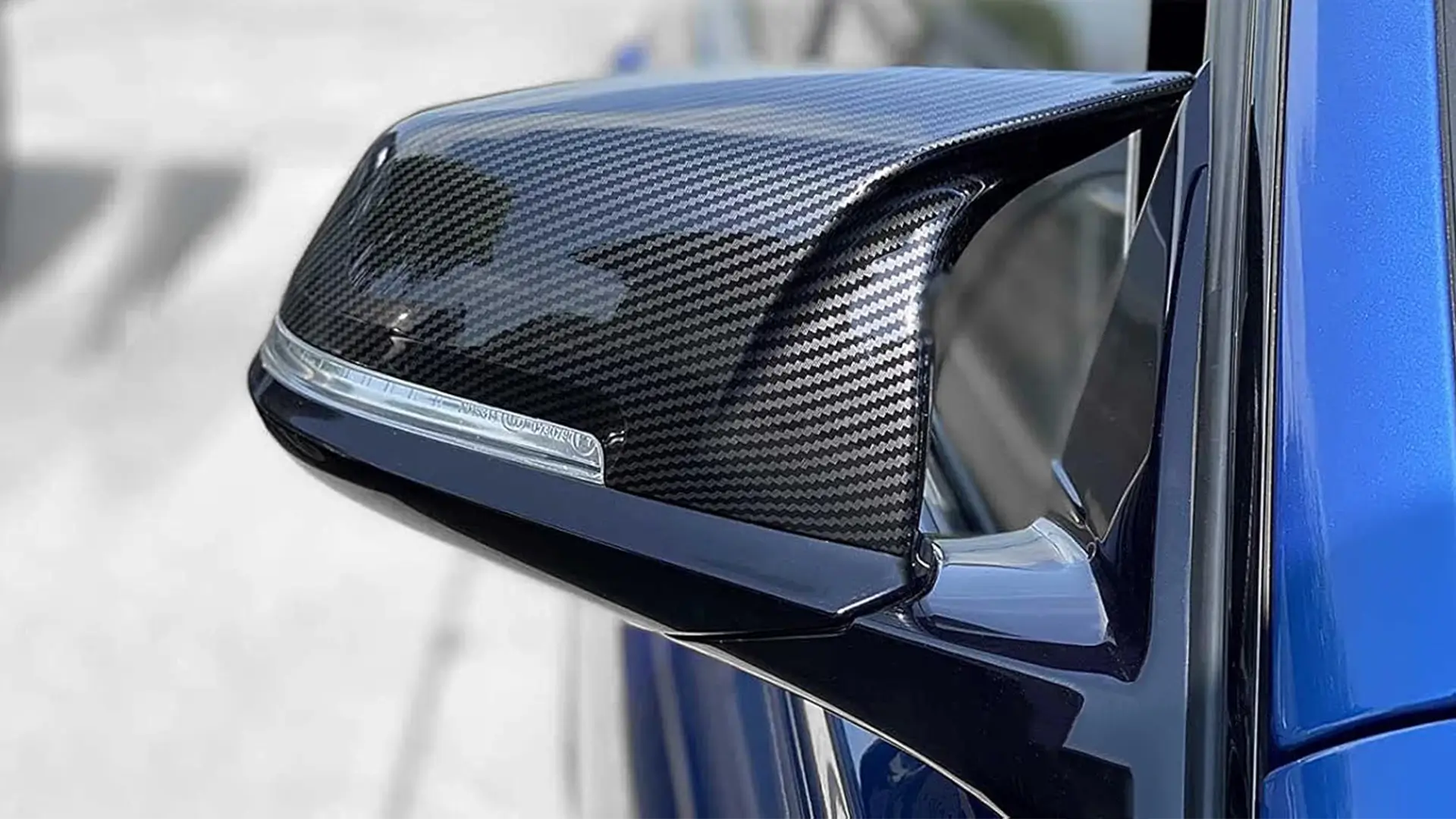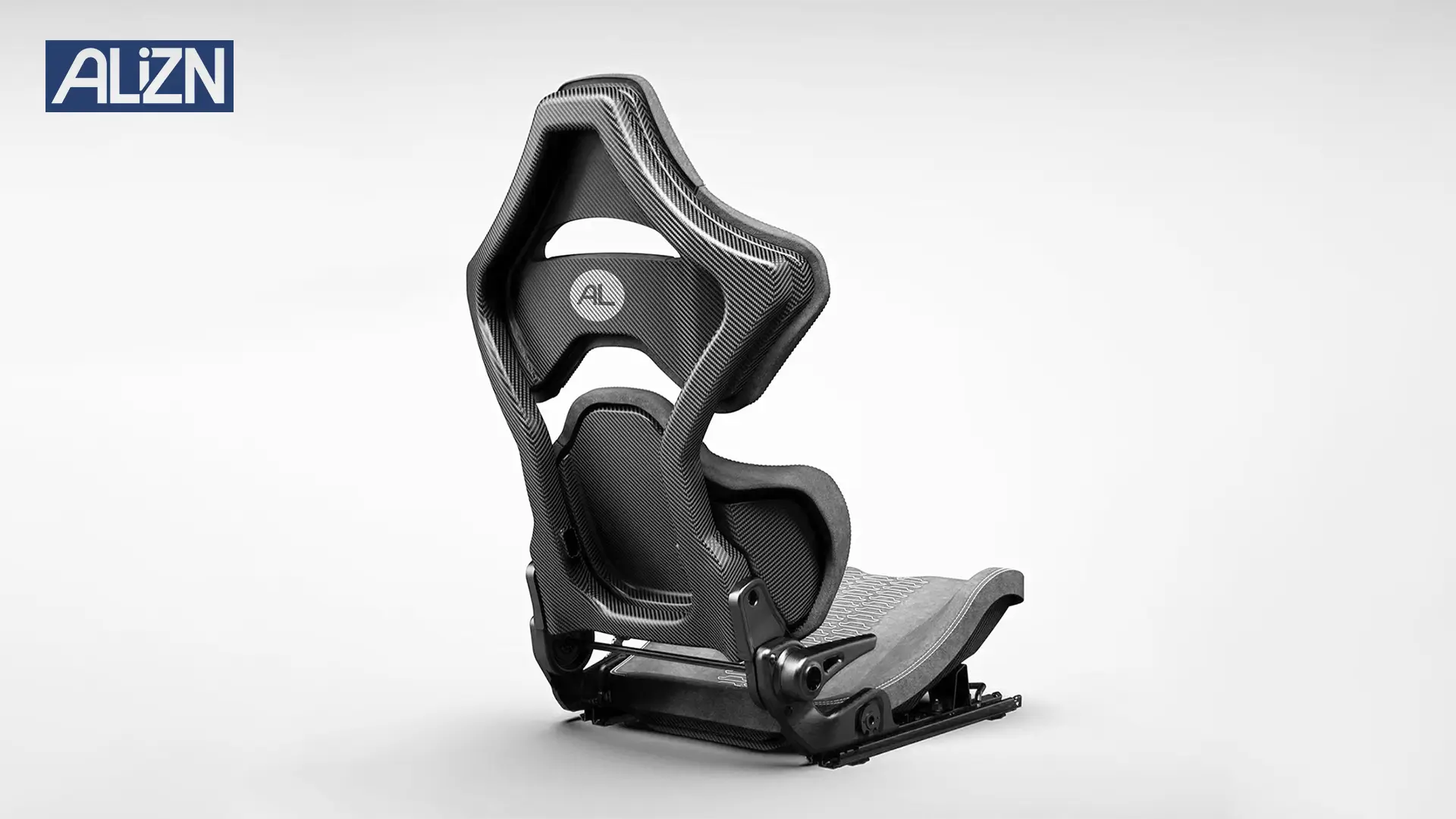Understanding Carbon Fiber Mirror Caps
Carbon fiber mirror caps, also referred to as carbon fiber mirrors, carbon fiber side mirrors, or carbon fiber mirror covers, are exterior automotive components designed to replace or enhance standard side mirror housings. These parts are valued for their strength-to-weight ratio, corrosion resistance, and premium aesthetic, making them a favorite in luxury, performance, and aftermarket vehicle segments. However, the complexity of their curved shapes, precise tolerances, and surface finish requirements demands careful consideration of the manufacturing process.
At Alizn, we offer a range of production lines tailored to different product specifications and business goals. Below, we evaluate the most relevant molding methods for carbon fiber mirror caps, including Hand Layup and Vacuum Bagging, Resin Transfer Molding (RTM), Autoclave Molding, and Compression Molding (using Sheet Molding Compound, SMC). Each method has unique strengths, and we’ll guide you through their suitability for your carbon fiber mirror covers.
Key Considerations for Choosing a Molding Method
Before diving into the specifics of each production method, it’s essential to identify the factors that influence your decision:
- Part Complexity: Carbon fiber mirror caps feature curved geometries and require smooth, glossy finishes.
- Production Volume: Are you producing low-volume prototypes, mid-volume aftermarket parts, or high-volume OEM components?
- Cost Efficiency: Balancing material costs, labor, and equipment investment is critical.
- Surface Quality: Aesthetic appeal is paramount for carbon fiber side mirrors, often requiring minimal post-processing.
- Mechanical Performance: The parts must withstand environmental factors like UV exposure, temperature changes, and vibrations.
With these considerations in mind, let’s explore the molding methods best suited for carbon fiber mirror caps.
Autoclave Molding for Premium Carbon Fiber Mirror Caps
Autoclave Molding is the gold standard for producing high-performance carbon fiber mirror caps, offering unmatched quality and mechanical properties.
How It Works
Pre-impregnated (prepreg) carbon fiber is laid into a mold, sealed in a vacuum bag, and cured in an autoclave under high pressure and temperature. This process ensures optimal resin-to-fiber ratios and eliminates voids, resulting in superior strength and finish.
Advantages for Carbon Fiber Mirrors
- Exceptional Quality: Autoclave Molding produces carbon fiber mirror caps with flawless surfaces and high structural integrity.
- Precision: Ideal for complex geometries and tight tolerances, ensuring perfect fitment for carbon fiber side mirrors.
- Lightweight: Optimized resin content minimizes weight, a key advantage for performance vehicles.
Limitations
- High Costs: Expensive tooling, prepreg materials, and autoclave operation make this method costly.
- Slow Cycle Times: Curing in an autoclave can take hours, limiting throughput.
- Low Scalability: Best suited for low-volume, high-value applications.
Best Applications
Autoclave Molding is ideal for premium carbon fiber mirror covers used in high-end luxury or motorsport vehicles, where quality and performance outweigh cost considerations. If your target market demands the best, this method delivers unparalleled results.
| Aspect | Details |
|---|---|
| Production Volume | Low (1-500 units) |
| Tooling Cost | High |
| Surface Finish | Superior, minimal post-processing |
| Cycle Time | Slow (hours per part) |
| Ideal For | High-end carbon fiber mirrors, motorsport, luxury vehicle OEMs |
Resin Transfer Molding (RTM) for Carbon Fiber Mirror Caps
Resin Transfer Molding (RTM) is a closed-mold process that strikes a balance between quality and scalability, making it a strong candidate for mid-volume production of carbon fiber mirror caps.
How It Works
In RTM, dry carbon fiber fabric is placed in a two-part mold, which is then sealed. Resin is injected under pressure, impregnating the fibers. The part cures within the mold, resulting in a precise, high-quality component.
Advantages for Carbon Fiber Side Mirrors
- Consistency: RTM delivers uniform thickness and excellent dimensional accuracy, critical for carbon fiber side mirrors.
- Good Surface Finish: Both sides of the part can achieve a smooth, glossy appearance, reducing post-processing.
- Moderate Scalability: Suitable for mid-volume production, making it ideal for aftermarket suppliers or OEMs with moderate demand.
Limitations
- Higher Tooling Costs: Two-part molds are more expensive than those used in Hand Layup.
- Equipment Investment: RTM requires resin injection systems and precise mold clamping, increasing setup costs.
- Cycle Time: While faster than Hand Layup, RTM is slower than high-volume methods like Compression Molding.
Best Applications
RTM is well-suited for mid-volume production of carbon fiber mirror covers, such as aftermarket parts for performance vehicles or OEM components for mid-range luxury cars. If your business requires consistent quality and moderate production runs, RTM is an excellent choice.
| Aspect | Details |
|---|---|
| Production Volume | Medium (100-5,000 units) |
| Tooling Cost | Moderate |
| Surface Finish | Excellent on both sides |
| Cycle Time | Moderate (minutes per part) |
| Ideal For | Aftermarket carbon fiber mirrors, mid-volume OEM parts |
Compression Molding (SMC) for High-Volume Carbon Fiber Mirror Caps
Compression Molding using Sheet Molding Compound (SMC) is a high-volume production method that offers cost efficiency for carbon fiber mirror caps.
How It Works
SMC, a mixture of chopped carbon fibers, resin, and fillers, is placed in a heated mold. The mold closes under high pressure, shaping and curing the material into the final part. This process is fast and highly automated.
Advantages for Carbon Fiber Side Mirrors
- High Scalability: Capable of producing thousands of carbon fiber mirror covers per day, ideal for OEMs.
- Cost Efficiency: Lower material and labor costs compared to other methods.
- Fast Cycle Times: Parts are produced in minutes, maximizing throughput.
Limitations
- Surface Finish: SMC parts may require additional finishing to achieve the glossy aesthetic of carbon fiber side mirrors.
- Fiber Orientation: Chopped fibers in SMC offer less control over mechanical properties compared to woven fabrics.
- Tooling Costs: High initial investment in durable, precision molds.
Best Applications
Compression Molding is best for high-volume production of carbon fiber mirror caps for mainstream OEMs or large-scale aftermarket suppliers. If your business prioritizes cost and scalability over premium aesthetics, this method is a strong contender.
| Aspect | Details |
|---|---|
| Production Volume | High (5,000+ units) |
| Tooling Cost | High |
| Surface Finish | Good, may require additional finishing |
| Cycle Time | Fast (minutes per part) |
| Ideal For | High-volume carbon fiber mirrors, mainstream OEMs, large-scale aftermarket |
Hand Layup and Vacuum Bagging for Carbon Fiber Mirror Caps
Hand Layup combined with Vacuum Bagging is a versatile and widely used method for producing carbon fiber mirror covers, particularly for low-volume or custom applications.
How It Works
In Hand Layup, carbon fiber fabric is manually placed into a mold, and resin is applied layer by layer. Vacuum Bagging follows, where the mold is sealed in a vacuum bag, and air is removed to compress the layers, ensuring uniform resin distribution and eliminating air voids.
Advantages for Carbon Fiber Mirrors
- Flexibility: Ideal for complex, curved shapes like carbon fiber side mirrors, allowing precise control over fiber orientation.
- Low Tooling Costs: Molds are relatively inexpensive, making this method cost-effective for small batches or prototypes.
- High-Quality Finish: Vacuum Bagging ensures a smooth surface, reducing the need for extensive post-processing.
Limitations
- Labor-Intensive: The manual process increases production time and costs for larger volumes.
- Consistency: Quality depends on operator skill, which may lead to variations in carbon fiber mirror caps.
- Scalability: Not suitable for high-volume production due to slow cycle times.
Best Applications
Hand Layup and Vacuum Bagging are perfect for low-volume production of carbon fiber mirror covers, such as custom aftermarket parts or prototypes for luxury vehicles. If your business focuses on bespoke designs or small-scale orders, this method offers the flexibility and quality you need.
| Aspect | Details |
|---|---|
| Production Volume | Low (1-100 units) |
| Tooling Cost | Low |
| Surface Finish | Excellent with proper technique |
| Cycle Time | Slow (hours per part) |
| Ideal For | Prototypes, custom carbon fiber mirrors, low-volume aftermarket parts |
Comparing Molding Methods for Carbon Fiber Mirror Caps
To help you choose the best method for your carbon fiber mirror caps, the table below summarizes the key attributes of each process:
| Molding Method | Production Volume | Tooling Cost | Surface Finish | Cycle Time | Ideal Application |
|---|---|---|---|---|---|
| Hand Layup & Vacuum Bagging | Low (1-100) | Low | Excellent | Slow | Prototypes, custom carbon fiber mirror covers |
| Resin Transfer Molding (RTM) | Medium (100-5,000) | Moderate | Excellent | Moderate | Mid-volume aftermarket or OEM carbon fiber mirrors |
| Autoclave Molding | Low (1-500) | High | Superior | Slow | Premium, high-end carbon fiber side mirrors |
| Compression Molding (SMC) | High (5,000+) | High | Good | Fast | High-volume OEM carbon fiber mirror caps |
Why Choose Alizn for Your Carbon Fiber Mirror Caps
As a leading carbon fiber parts manufacturer, Alizn offers expertise across multiple production lines, ensuring we can meet your specific requirements for carbon fiber mirror caps, carbon fiber mirrors, carbon fiber side mirrors, or carbon fiber mirror covers. Our state-of-the-art facilities and experienced team allow us to tailor solutions to your production volume, budget, and quality needs. Whether you’re developing prototypes, supplying aftermarket parts, or producing OEM components, we partner with you to deliver high-performance products that enhance your brand.
Our Commitment to Quality
- Advanced Technology: We invest in cutting-edge equipment for RTM, Autoclave, and Compression Molding.
- Skilled Craftsmanship: Our Hand Layup and Vacuum Bagging processes are executed by trained professionals.
- Custom Solutions: We work closely with B2B clients to optimize designs and select the best molding method.
- Sustainability: Our processes minimize waste, aligning with eco-conscious manufacturing practices.
Making the Right Choice for Your Business
Selecting the right molding method for carbon fiber mirror caps depends on your business objectives. Here’s a quick guide to help you decide:
- For Low-Volume or Custom Projects: Choose Hand Layup and Vacuum Bagging for flexibility and low tooling costs.
- For Mid-Volume Production: Opt for RTM to balance quality, consistency, and scalability.
- For Premium, High-Performance Parts: Autoclave Molding delivers unmatched quality for luxury or motorsport applications.
- For High-Volume OEM Needs: Compression Molding with SMC offers cost efficiency and rapid production.
By understanding the strengths and limitations of each method, you can align your production strategy with your market demands. At Alizn, we’re here to guide you through every step, from design to delivery, ensuring your carbon fiber mirror covers meet the highest standards.
Next Steps
Ready to start producing carbon fiber mirror caps? Contact Alizn today to discuss your project requirements. Our team will analyze your needs, recommend the best molding method, and provide a tailored solution to bring your carbon fiber mirrors to market. Visit our website at www.alizn-carbon-fiber.com for more information on our production capabilities and past projects.
With the right molding method, your carbon fiber mirror caps can elevate your product line, delight your customers, and drive your business forward. Let Alizn be your partner in achieving excellence in carbon fiber manufacturing.
Final Thoughts
As composite material experts, we are willing to provide you with critical assistance. The correct judgment now avoids cost overruns, delays, and disappointing results later.
Need advice on your custom carbon fiber part? Reach out to our team for expert guidance.




